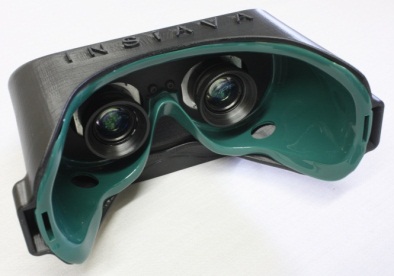Posted on February 22, 2013
INSiAVA was a first time exhibitor at the SPIE Photonics West exhibition, held 5-7 February 2013 in San Francisco, California, USA. The official number of attendees exceeded 20,000. INSiAVA Pty Ltd has the University of Pretoria as the majority shareholder. The University of Pretoria is also INSiAVA’s preferred research partner. The University’s Department of Electrical, Electronic and Computer Engineering hosts the Carl and Emily Fuchs Institute for Microelectronics (CEFIM), where the bulk of the ongoing research and development on INSiAVA’s silicon light sources is conducted.
The main attraction of INSiAVA’s exhibition at SPIE Photonics West was the demonstration of two pairs of stereoscopic microdisplay goggles which illustrated the suitability of CMOS microdisplays for selected applications.

The microdisplays were implemented in a standard 0.35 μm CMOS (complementary metal oxide semiconductor) technology with no post-processing steps. Since CMOS chips are known to be extremely inexpensive, these microdisplays have the potential to add significant intelligence and added features to consumer and industrial products at virtually zero extra cost. Applications include low unit cost products requiring high reliability and low luminance levels, such as night vision systems and commercial toys.
The numerous visitors to INSiAVA’s booth learned that these useful microdisplays are available to be designed, manufactured and shipped to customers anywhere in the world. The technology is also available for evaluation under license.
INSiAVA’s exhibit also showcased an integrated all-silicon optical data link. A high quality video showed the data rate and switching speed capability of an all-silicon PC-to-PC optical link which utilised the USB protocol. It is believed that this is the first practical implementation of an all-silicon optical link.
A MOEMS opto-fluidic device was also on show at INSiAVA’s exhibition booth, demonstrating the suitability of silicon light sources for biochemical detection and analysis applications. The silicon light source was integrated, alongside microfluidics channels, within PDMS to allow basic absorbance testing to be performed directly.
Copyright © University of Pretoria 2025. All rights reserved.
Get Social With Us
Download the UP Mobile App